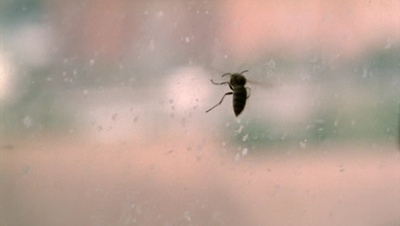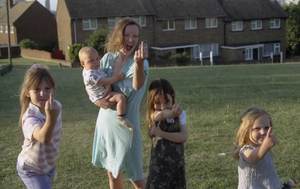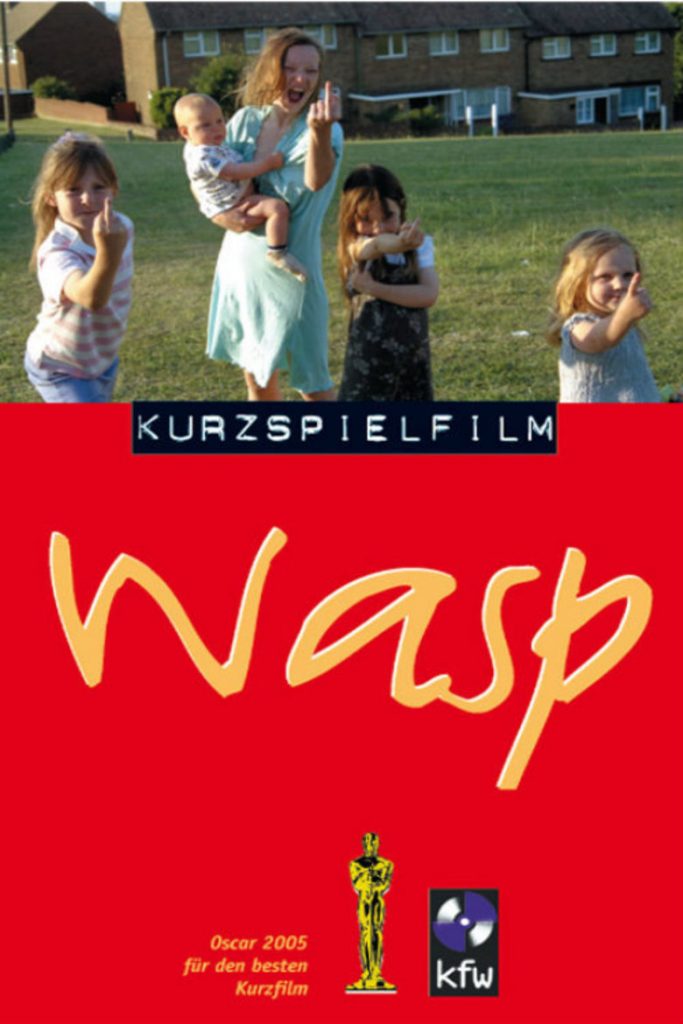Andrea Arnold’s realism focuses itself around the lower rungs of the British socioeconomic hierarchy, where the housing estates are run down, children roam the streets instead of the school ground, and poverty seeps into the lives of the protagonists we follow. This is exactly the case in her 2003 short film Wasp, which follows young mother Zoe as she balances her four young children, their all-consuming poverty, and her desire for a romantic social life.
Animals also play a key role for Arnold, often as metaphors for the entrapment the characters face in both their environments and relationships to other people. Wasp provides a similar metaphor for the absolute terror felt at the encroachment of poverty. The scene in question is from the end of the short film, when the children scavenge a discarded packet of ribs from the floor in desperate hunger. In Zoe’s absence, the remaining sauce around Kai the baby’s mouth entices a wasp onto his face. The children scream for their mother, who arrives just in time to watch the wasp enter Kai’s mouth.
Not only is the wasp reminiscent of Arnold’s signature ‘fly on the wall’ style, as prominent as ever in Wasp due to the hand-held footage she uses, it also functions in this scene as a multi-layered metaphor. Firstly, it is a metaphor for Zoe, since wasps are often considered pests and are treated with little regard. The same can be said for Zoe, who is a lower class, unemployed, single mother – and not a very good mother at that. Not only does the comparison between Zoe and the wasp imply that Zoe is of little significance, but also highlights a societal attitude towards the lower classes in which they become de-humanised. Zoe is also prone to snapping, like the sting of a wasp, as demonstrated by her scream of ‘WHY?!’ once the wasp has departed, in an attempt to immediately shift the blame of her own neglect onto her other children. It is after all Zoe’s actions that place her children in danger; if she had been more concerned with their safety than with the rekindling of her relationship, the situation may have been avoided. Therefore, the wasp is representative of Zoe in the sense that her actions are a threat to her family. It is her lack of motherly attention that is driving her children into starvation, and placing them under physical threat.
There is, however, a wider metaphor that the wasp represents, which is the constant fear that families experience when they are riding, or living below, the poverty line. It is easy for the viewer to blame Zoe for her actions, yet without removing responsibility from her entirely, we must also consider the hardships of raising a family of four children by herself. Clara L Johnson explains that for women that give birth young ‘the likelihood of poverty condition is high’ and adding ‘Incomplete education, low-level income […] and probably social dependency’ [i] are also commonly associated with the same group, which may go someway to explaining Zoe’s incapability to provide for her family – she likely began her life as an adult already stuck within the poverty cycle, and has no way to escape it. The metaphor of the wasp therefore travels beyond a criticism of her as a character to highlight the threat of the poverty cycle, and struggle the lower-classes face to keep their head above water.
Bibliography
Johnson, Clara L. ‘Adolescent Pregnancy: Intervention into the Poverty Cycle’, Adolescence, Volume 9.35 (1974) http://search.proquest.com/docview/1295879206?accountid=13828 [accessed 23rd January 2016]
[1] Clara L. Johnson, ‘Adolescent Pregnancy: Intervention into the Poverty Cycle’, Adolescence, Volume 9.35 (1974) http://search.proquest.com/docview/1295879206?accountid=13828 [accessed 23rd January 2016]


